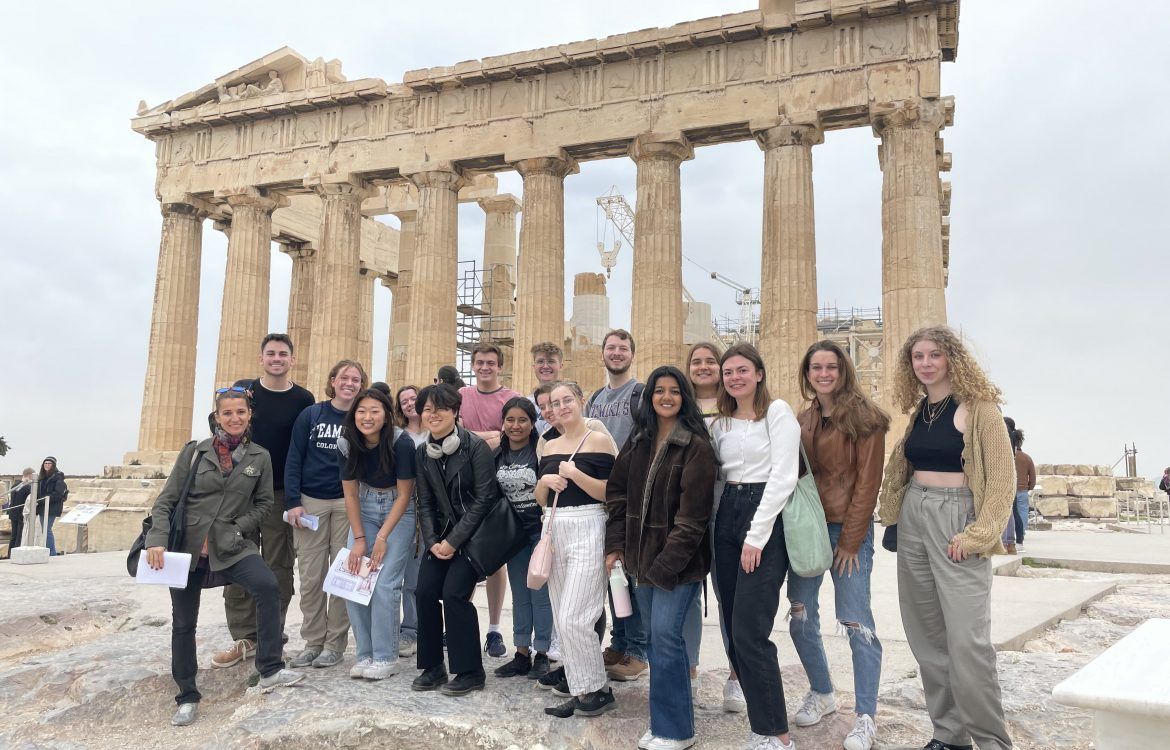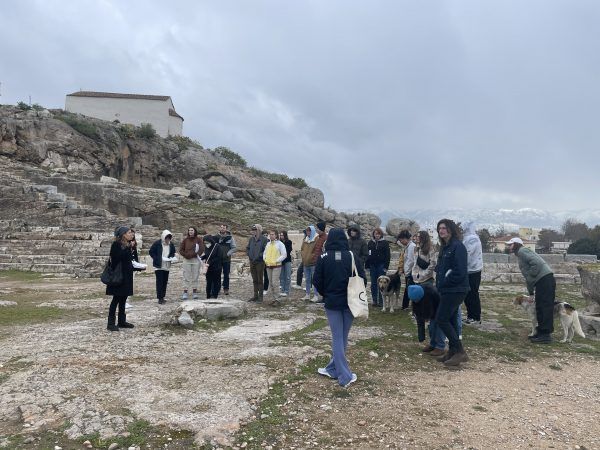
Understanding Modern Athens through the Study of Greek Myth
Written by Meredith Neid, CYA student of Spring ‘23
Being a junior at Grinnell College studying political science, I have enjoyed living and studying in Athens this past semester for many reasons – I have learned a lot about Greece and Europe in general, I have gained independence and confidence while living abroad, and I have had a lot of fun! My experience as a student in Nina Papathanasopoulou’s Ancient Myth and Religion course turned out to be a formative ingredient in my ability to make the most out of my life in Athens. Studying myth helped me contextualize my experience in Athens alongside Athens’ extensive and rich history, which added a unique depth and meaning to my study abroad experience.
Before coming to Athens, I did not know much about ancient Greece. As a political science major, I pay a lot of attention to the modern and future world and have found it difficult as a student to attach to events in the distant past. However, when I moved to Athens, I quickly gathered how connected this modern city is with its ancient layers. I remember on my very first week in the city, I went on a guided walk with CYA professor Angelos Papadopoulos that explored the Athens metro. I learned about the ancient tombs and infrastructure that the city simply stumbled upon when excavating to build the underground tunnels.
Standing on soil that contained so many layers of history felt bewildering, and I began to realize what a limited conception of the past I had. Later that week, I went for a short jog around my neighborhood and ended up randomly upon Areopagus Hill, the site of trials that mainly dealt with homicide. Early on in my journey, I began to feel overwhelmed by the massive history in which Athens is steeped. I felt I could not truly understand this city without conceptualizing its past, and the Myth and Religion course was such an important guide for me in this process.
For example, at the beginning of our Myth and Religion course, we learned about the role of temples and sanctuaries in ancient Greek religion. We were taught about the common structure and decoration of temples, and how ancient Greeks would use these spaces for worship and public gatherings. Then, further along in the semester, we read the Iliad and the Odyssey focusing on the role of the goddess Athena and her relationship to Greek heroes. We discussed the origins of the goddess, her domains of influence and power, and her significance to the city of Athens. This learning all culminated in a class trip to the Acropolis where we visited her temple, the Parthenon. My base-level understanding of the myth and religion that surrounded the Parthenon allowed me to appreciate through a historical perspective why the temple is such an important structure for the heritage, community, and political position of Athens. We discussed how the Athenians used mythical stories to decorate their temple and how they used these myths as a tool to communicate their values and form a sense of identity. I know that I would not have been able to do this without Nina Papathanasopoulou to guide me, as before coming to Greece, I did not know the difference between the Acropolis and the Parthenon – had I visited on my own, I would have entirely missed the gravity of the site. However, after our excursion to the Acropolis, for the rest of the semester, every glance I took at the Parthenon on my wandering walks up the hills of Athens or shopping around in Plaka and Monastiraki reminded me of the history and magnitude of the city I was in.
For how little I knew about the Parthenon, I knew even less about the ancient Agora of Athens. I remember spending a considerable amount of energy at the beginning of my time here trying to figure out what exactly an agora was, and I simply could not get my head around it. I walked by the Agora all the time, and I even visited with my friends in February, but I just felt overwhelmed by how much history was in the space. I made a goal then to return to the Agora before leaving Athens having read and experienced more and seeing what I could understand. In the meantime, in my Myth and Religion course, we visited Eleusis, which is home to Demeter’s temple and sanctuary and the site of the ancient Eleusinian mysteries. During our visit, we discussed how and why Demeter was worshipped, focusing on why the Eleusinian mysteries may have taken place and what they revealed about how the ancient Greeks conceptualized death and how that might have dictated their actions during their lives.

Class at Eleusis
Similarly, we explored Brauron (the site of Artemis’ temple) and Marathon (the site of the battle of Marathon) and conceptualized how the ancient world might have functioned around these sites. Additionally, we read Aeschylus’ Oresteia and learned about the democratic developments in the political structures and social order of ancient Greece. We engaged in classroom discussions about different myths and plays which focused on what the literature could reveal to us about the social order of ancient Greece – how governments functioned, the balance between the family and public spheres, and the role of women and men. By the time I returned to the Agora in mid-May, I explored the temple of Hephaestus and the governmental buildings with a more confident fascination, able to place the ruins within their time period, appreciate their mythical representations, and imagine how ancient Athens may have operated back then.
Overall, my study abroad experience has been a great one in large part because of the depth, texture, and meaning that my Myth and Religion course and Nina Papathanasopoulou provided me in being able to understand and fuse the history and modernity of Athens!
Written by Meredith Neid, CYA student of Spring ‘23






